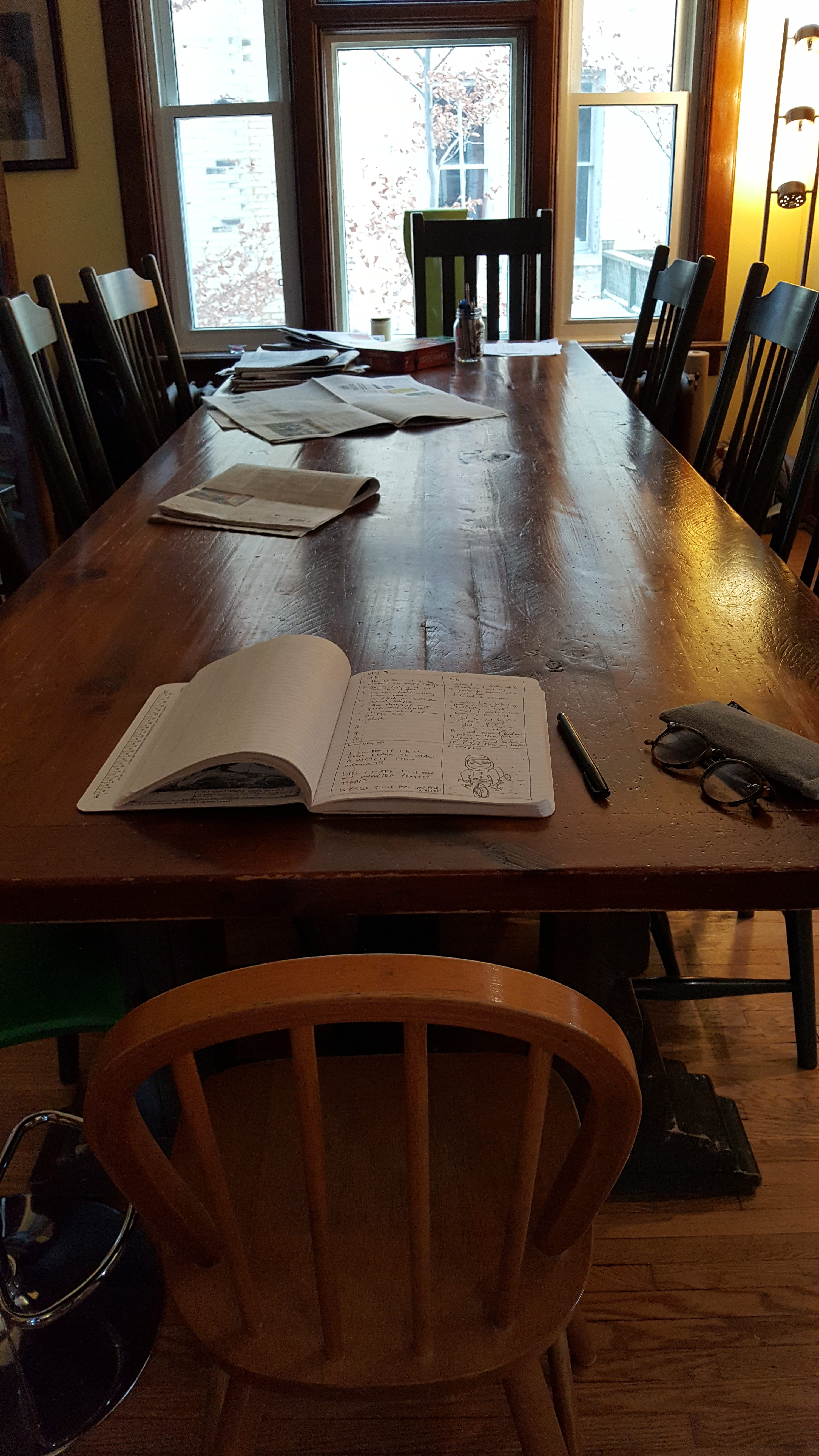Carrie Snyder’s Writing Space
My word for the year is SPACE. In choosing it, I’ve been thinking conceptually, holding in my mind the idea of space as time, a luxurious clean openness into which I might step, spreading out thoughts and dreams and words with enough room to really look at and enjoy the creation of something larger than myself.
Essentially, I keep envisioning space to write. Space to sit and quietly stare out of the window. Space to think.
As I’m acquainting myself more closely with the word, it seems to be telling me that space isn’t merely a concept, but a physical construction. Where are my writing spaces?
I remember writing The Juliet Stories in 2011 in a child’s bedroom, desk against one wall, behind me a crib and a bureau of cloth diapers. Now, I have an entire office, a small space to be sure, but all mine. Truth be told, it’s crammed with crap, wall to wall. A glance around the room (in which I’m sitting now to write) reveals, in no particular order, an orange kettlebell, a drum kit stool with an art portfolio resting atop it, a brick wall of my own taped-up cartoons, last year’s calendar, black pens, pencil shavings, a box of crayons, reading glasses, a tiny speaker, scissors, a candle (unlit), a backpack crammed with teaching supplies on a homely rocking chair, stacks of file folders and books, more stacks, more books, more files and shelves, a meditation stool, and a dog bed (currently empty).
I haven’t listed the half of it.
Confession: when I walk into this room, a feeling of despair descends, outright panic. Should I be Marie Kondo-ing this space? What brings me joy?
As it happens, I often write, instead, at my dining-room table. I clear a small spot amidst the newspapers and crumbs, cup of turmeric tea by my elbow, notebook and pen, or laptop before me. This isn’t to say that I don’t write at my actual desk in my actual office; but it’s easier, somehow, to write in space that feels temporary, space I’ve made just for the purpose of writing in it.
My office has become so much more than what it was originally intended to be: mainly storage space, now that I think of it. The kids come in to print their school projects. I answer emails, pay bills, shop online. I file receipts. I plan classes, mark student’s work, update spreadsheets. At this desk, I fall down the rabbit hole of to-do-lists, must-do-lists. It’s all business in here.
And writing—writing isn’t business for me. Writing is luxury.
It is space.
It is time.
I believe firmly in the concept of having a room of one’s own; but in practice, this room of my own has become something it was never intended to be: an albatross of responsibilities and expectations, few of them to do with writing at all. Maybe my perfect writing space is nothing but space: the end of a table, the corner of a bedroom, the front seat of a parked car, anonymous, temporary, with no particular associations attached. To write is to travel somewhere imaginatively; it’s easier to leave behind that which is temporary, that which has taken little effort to clear. That which does not otherwise belong to me.
 It’s imaginative space I intend to claim this year. Luxurious, clean, open space for my mind to wander freely. Away from to-do lists, receipts, invoices, budgets, grant applications, course outlines, time tables, school fees, and all of the other things that pull my shoulders up to meet my ears as soon as I step into this office. Maybe someday I’ll Marie Kondo the crap out of this particular space, but meanwhile, that crap needs somewhere to live. I’ve got a different solution.
It’s imaginative space I intend to claim this year. Luxurious, clean, open space for my mind to wander freely. Away from to-do lists, receipts, invoices, budgets, grant applications, course outlines, time tables, school fees, and all of the other things that pull my shoulders up to meet my ears as soon as I step into this office. Maybe someday I’ll Marie Kondo the crap out of this particular space, but meanwhile, that crap needs somewhere to live. I’ve got a different solution.
Look for me at the end of the dining-room table.
Photos provided by Carrie Snyder

